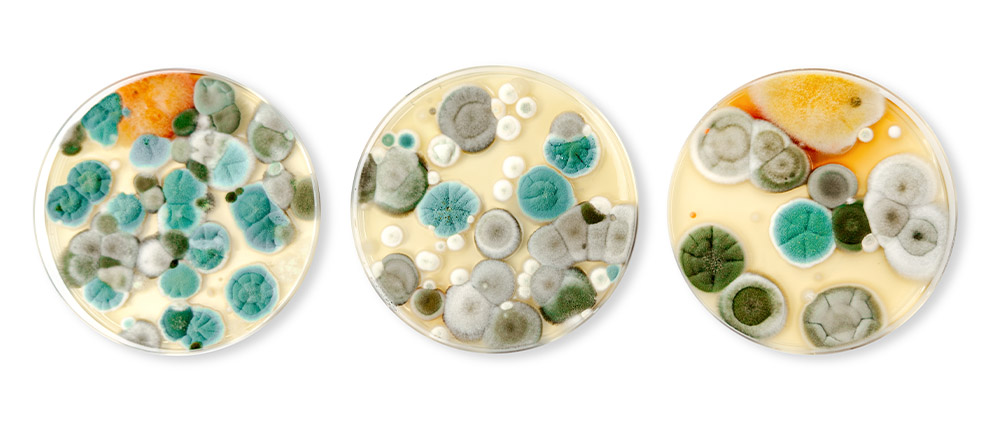
What’s in the air?
Mold
Once you can see it, it’s too late. When mold becomes visible, it has already found its optimal living environment and is in the process of spreading rapidly both where we can see it and where we can’t. Our instinctive feeling of disgust when we see or smell mold is a clever evolutionary design, because it can make us sick and in the worst case even poison us.

Understanding mold
They reproduce via airborne spores. Although these spores are omnipresent in the ambient air, they are generally harmless to humans in naturally occurring concentrations. Common species found indoors include Aspergillus, Penicillium, and Stachybotrys. What we see on walls and on spoiled food is known as mold rot. Depending on the genus, this can produce significant amounts of toxic substances. The decomposition process also produces volatile organic substances that cause bad odors and are sometimes harmful to health.
How molds endanger our health
Allergies
Mold spores can trigger allergic reactions such as headaches, rhinitis, red eyes, and a runny nose. Young children’s risk of allergic asthma increases if they are permanently exposed to indoor molds.
Respiratory disease
Molds can trigger asthma attacks in people with asthmatic conditions. They can also damage the lungs, cause pneumonia and, in immunocompromised individuals, cause a condition called aspergillosis, which restricts the lung function and further weakens the immune system.
Other diseases
In some cases and high concentrations, molds can also cause cancer and damage the central nervous system.
Generally speaking, the less mold there is, the better.
 automotive filtration insight
automotive filtration insight